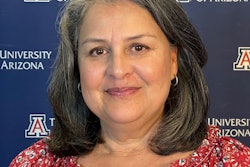Most selective private colleges and universities in the U.S. still have disproportionately low enrollment numbers for Latino first-time, full-time undergraduate students, according to a recent report from The Education Trust. Sandra Perez
Sandra Perez
The sequel to a 2020 report on Black and Latino enrollment at selective U.S. public institutions, the report turns its attention to the nation’s private schools, namely the 122 most selective private four-year colleges and universities in the nation.
In the wake of the U.S. Supreme Court’s decision to strike-down of Affirmative Action last year, it was important to examine how much access Black and Latino students have to these elite schools, said report author Sandra Perez, a higher education research analyst for Ed Trust.
“We know that over 50% of our nation's leaders come from these elite institutions,” Perez said. “If we're not getting Latinos into these institutions, how are we going to have leaders that are also representative of our demographics?”
The report compares enrollment of first-time, full-time, Latino undergrads from the years 2000 and 2020, grading and scoring each school based on “how well an institution’s share of Latino undergraduates represents the Latino population ages 18-24 in the states from which these first-time students came,” according to the report. Scores of 90 or higher were given A’s, 80 or higher B’s, and so forth.
For 2020, Harvard University scored 52, an F. Yale University received a 62, a D. Stanford University also got an F, with an access score of 53. And Duke University saw an F as well, with a dismal score of 48.
Despite general growth in Latino undergrad enrollment compared to 2000 – the average score for all 122 schools increased by 25 points since then – progress has still been insufficient, the report noted.
The average access score in 2020 was 55. More than two-thirds of the 122 schools (78%) received F’s. And approximately 50 schools had Latino enrollment rates at or below 10%, according to the report.
“This report shines a light on the fact that even in states where considering race in admissions was permitted before the Supreme Court rulings in SFFA vs. Harvard and SFFA vs. North Carolina, private institutions have not sufficiently created access opportunities for Latino students,” said Dr. Wil Del Pilar, senior vice president at Ed Trust. “In states with bans on Affirmative Action, holistic admissions processes also failed to dramatically improve representation."
It is time, he said, "to rethink college admissions and affordability policies to ensure that student populations reflect the demographics of states where they recruit and enroll students.”
Even the eight Hispanic-serving institutions among the 122 varied in their grades – four received A’s, one C, one D, and two F’s.
Of the 11 schools that received A’s (9%), almost half were minority-serving institutions.
The calculation for the individual access scores involves what Perez calls average “Latino enrollment benchmarks,” which represent Latino population sizes in the home states of a school’s Latino students. In essence, access scores are a comparison of a school’s Latino undergrad numbers to its benchmark, the Latino population sizes in the states where students are coming from.
The benchmarks themselves help contextualize the significance of changes in an institution’s Latino enrollment. Some schools, for instance, may see enrollment growth that, when compared to growth of its benchmark, seems less impressive.
Florida Memorial University saw a 4.4-percentage-point increase in Latino undergraduate enrollment since 2000 but experienced an 8-point increase in its Latino enrollment benchmark for the same time span, meaning Latino enrollment there was not enough to keep pace. Similarly, Pepperdine University's 5.6-point increase in enrollment is tempered by its 9.6-point benchmark rise.
Perez noted that depending on a school’s benchmark, enrollment of less than 100 more Latino students could mean the difference between a D and an A. Though, “at other institutions, it might take a lot more enrollment to hit that benchmark.”
Most of the analyzed schools, 56.8%, saw their Latino undergrad enrollment increase more than their benchmark, while 41% saw the opposite. Vanguard University of Southern California, North Park University, Texas Wesleyan University, McMurry University, and California Institute of Technology were highlighted in the report as schools where enrollment changes surpassed benchmark growth by the most.
While Vanguard’s Latino benchmark rose by 11 percentage points since 2000, its enrollment for this student population rose by 34 points.
“Those are institutions where they had huge gains in Latino enrollment and they had major differences between the benchmark that they were supposed to hit and that enrollment,” Perez said. “So at these five institutions, we need to look at what they're doing, how they're doing it, and why students are applying to and enrolling at these institutions at higher rates than others.”
The report offers several recommendations to help address issues of insufficient Latino representation, including calls on higher ed institutions to expand their outreach, calls on P-12 schools to provide more counselors, and accrediting agencies to develop better student-of-color success standards for a school to meet.















